Study, work or travel in the UK. British
culture and life.


Berlin's history and monuments
|
|
Study, work or travel in the UK. British
culture and life.
|
|
||
|
|
|
|
||
 |
||||
|
|
||||
 |
||||
|
Berlin's history and monuments
|
||||
|
Sections:
|
Introduction | |
| Pre-1919 | ||
| Weimar Repiblic | ||
| Third Reich / World War Two | ||
| Cold War | ||
| Modern Berlin | ||
| Further information | ||
| Links |
|
INTRODUCTION
|
|
PRE-1919
|
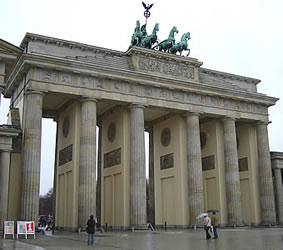 Brandenburger Tor ("Brandenburg Gate") |
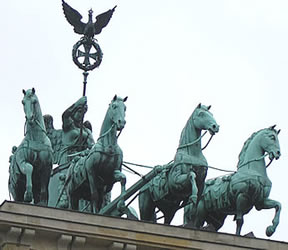 Quadriga |
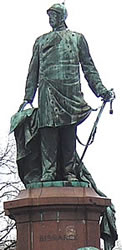 Bismarck |
|
WEIMAR REPUBLIC
|
 |
Cabaret
[1972] - 30th Anniversary Special Edition (DVD) Studio: Fremantle Home Entertainment Date: September 2002 |
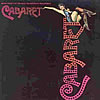 |
Cabaret
[soundtrack] (CD) Artists: Liza Minnelli & others Label: Mca Date: April 1997 |
 |
Berlin
Stories: Two Novels (book) Author: Christopher Isherwood Publisher: W.W. Norton & Company Ltd Date: February 1988 |
 |
What
I Saw: Reports from Berlin 1920-33 (book) Author: Joseph Roth Publisher: Granta Books Date: April 2004 |
|
THIRD REICH / WORLD WAR TWO
|
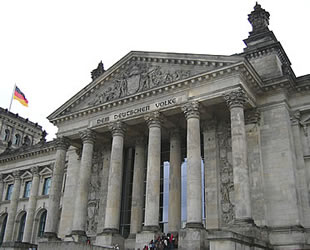 Reichstag "Dem Deutschen Volk" ("to the German people") |
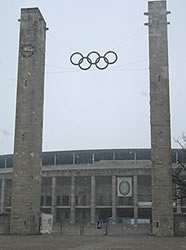 Berlin's Olympic stadium |
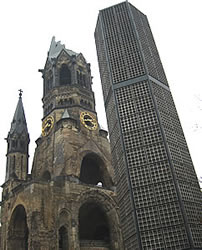 Kaiser-Wilhelm-Gedaechtniskirche: damaged during bombing raids on Berlin |
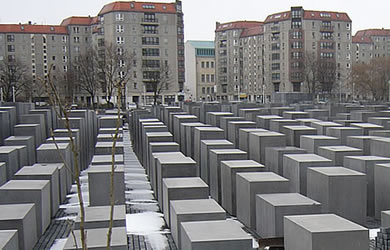 A new memorial for Jewish victims of the Nazi regime |
 |
The
Bonfire of Berlin: A Lost Childhood in Wartime Germany Author: Helga Schneider Publisher: William Heinemann Date: March 2005 |
 |
An
Underground Life: Memoirs of a Gay Jew in Nazi Berlin Author: Gad Beck Publisher: University of Wisconsin Press Date: September 2000 |
|
COLD WAR
|
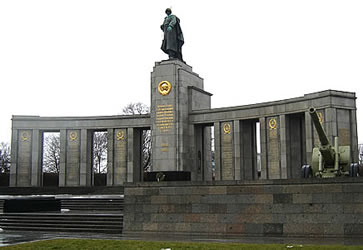 Sowjetisches Ehrenmal (Monument to Soviet Soldiers) |
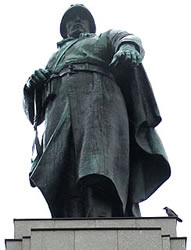 Sculpture of a Soviet soldier |
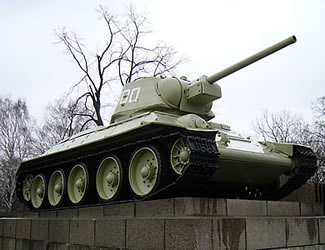 One of the first two tanks which entered Berlin when Soviet soldiers entered the city |
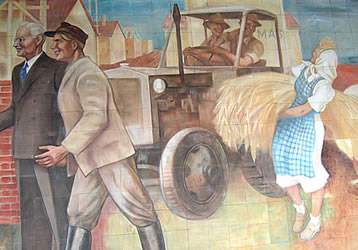 This mural in East Berlin shows an idealised way of life: everyone is shown smiling and working together |
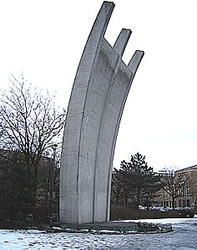 Luftbruecke: a memorial for those who died in the Berlin Airlift 1948-9 |
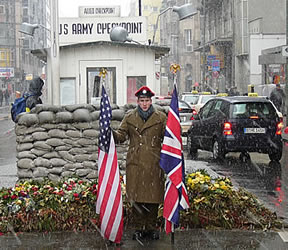 Checkpoint Charlie |
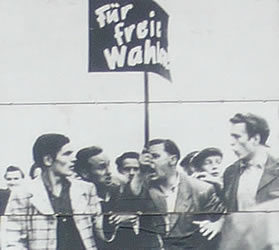 1953: strikes in East Germany (this protester is demanding free elections) |
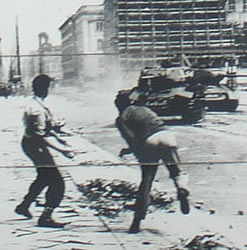 The 1953 uprising: suppressed by army tanks |
 |
The
Rise and Fall of the German Democratic Republic, 1945-90 Author: J.M. Dennis Publisher: Longman Date: November 2000 |
 |
Anatomy
of a Dictatorship: Inside the GDR, 1949-1989 Author: Mary Fulbrook Publisher: Clarendon Press Date: December 1997 |
 |
Stasiland:
Stories from Behind the Berlin Wall Author: Anna Funder Publisher: Granta Books Date: June 2004 |
|
MODERN BERLIN
|
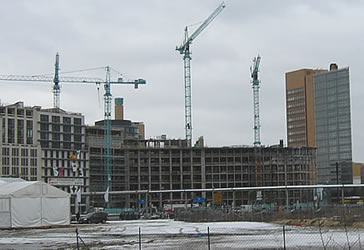 Reconstruction after the fall of the Berlin Wall |
|
FURTHER INFORMATION
|
|
|
|